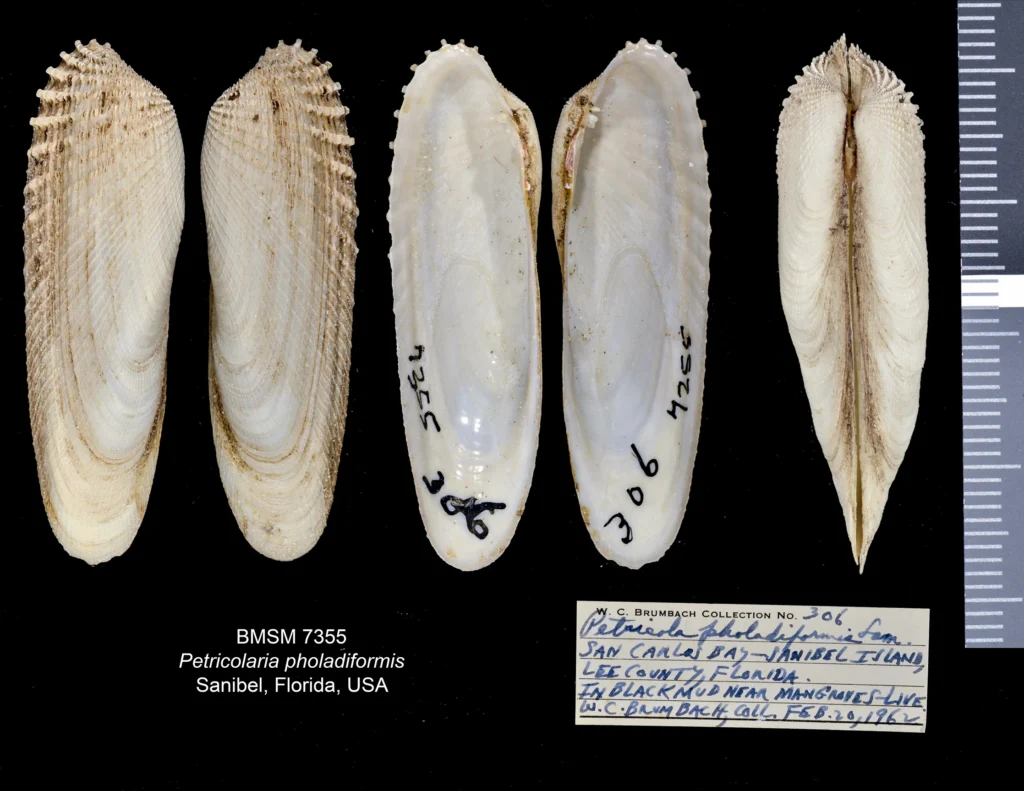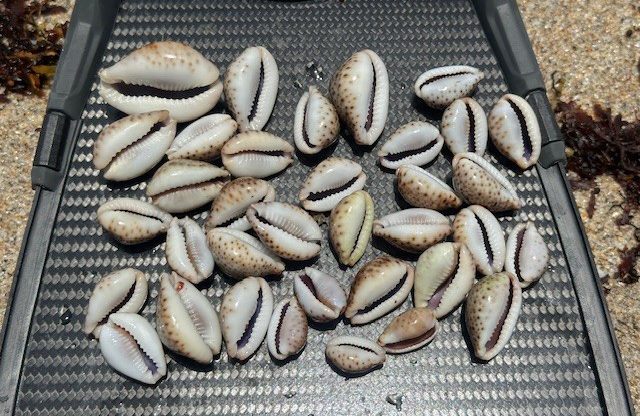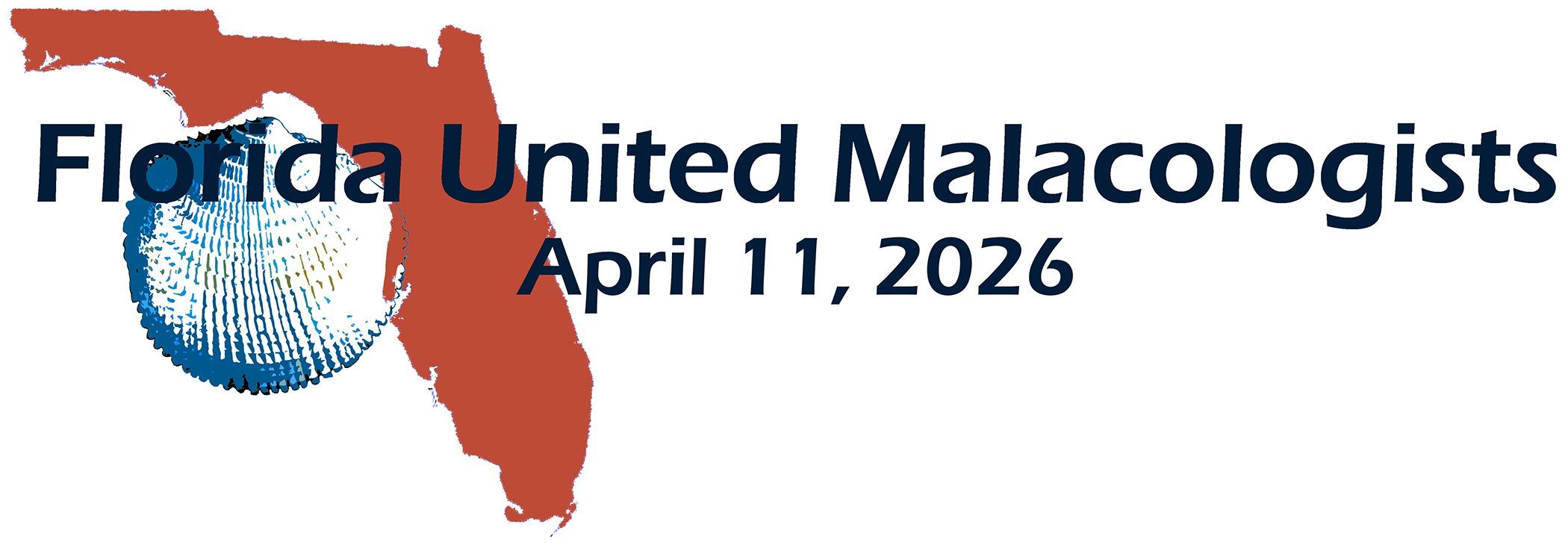Hello! A member of the Venus clam family Veneridae, Petricolaria pholadiformis gets its name from a superficial similarity with the celebrated Angel Wing (Cyrtopleura costata). Both species burrow in compact mud or peat, but belong to separate bivalve families, with the False Angel Wing sharing its genetic and anatomical features with Venus clams, and the Angel Wing with piddocks and other boring bivalves in the family Pholadidae. Among other differences between the “true” and the False Angel Wing are the size, much smaller (to two inches) in the False Angel Wing, and the presence of hinge teeth in this latter species. The similar shapes of the two species represent what biologists call a convergence, in this case most likely resulting from adaptation to what boils down to the same habitat and burrowing mode of life. As the original collection label indicates, the late William C. Brumbach collected the illustrated shell in February 1962 in “black mud” on the bay side of Sanibel Island.



